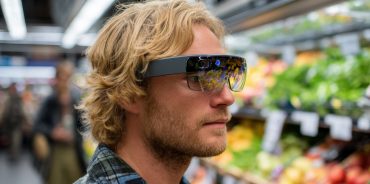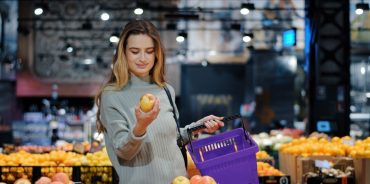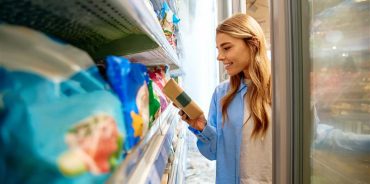An introduction to onsite retail media
Retail media is one of the world’s fastest growing advertising disciplines. With its expansive scope, though, it can also be one of the most complex, with new channels and terminology emerging at a staggering rate. Even for the best informed brands and agencies, keeping pace with those developments can be challenging.
In the latest in a series of articles exploring the state of the retail media landscape today, Ed Semple looks at the area of “onsite” media – what it is, what it does, and how advertisers can capitalise on the opportunities it offers.
In 2022 alone, advertisers around the world invested £81bn into retail media[1] – and much of that online. With the continued growth of ecommerce has come the opportunity to engage with millions of customers as they build their digital baskets, giving advertisers the chance to sway decisions at a critical moment. For consumer packaged goods brands in particular, that has led to a growing focus on the digital properties owned by grocery retailers.
Enter “onsite” media. Onsite refers to any media placement that is available on a retailer’s own digital properties, typically their website or mobile app. In that respect, onsite can cover a wide range of advertising opportunities that run from awareness-driving banner ads through to personalised promotions and other targeted content. Offsite media – an area that we’ll cover in a future post – relates to digital ads delivered away from a retailer’s properties.
Let’s look at some of the key opportunities in the Onsite Media space, and how they can be used to engage with online grocery shoppers.
Display Advertising
From the homepage to the checkout, retailer websites and apps offer a wide range of ways in which to reach out to customers. With shoppers looking for inspiration as they browse, Display Advertising gives brands the ability to capture their attention and highlight the unique qualities of their products.
Display Advertising can take many forms, but some of the most common include:
- Tenancy Ad Placements – focused on engaging customers across their shopping journey, opportunities here typically include the likes of homepage tiles and page headers.
- Campaign Media – designed to raise awareness and drive interest, included here would be formats such as text-to-win banners, new product banners, and dedicated brand zones.
- Banner Placements – zeroing in on the highest traffic areas, these activities are normally focused around the homepage and checkout.
Sponsored Listings
Visibility plays a critical role when it comes to online grocery; 41% of all search-related basket additions come from the first two results[2]. Designed with that reality in mind, Sponsored Listings (sometimes known as Sponsored Products or Promoted Listings) enable brand advertisers to bid for placements in key locations on retailer websites and apps.
Some of the most common places that Sponsored Listings are used include:
- Search results – ads that appear natively at the top of the results when customers search for a generic or competing brand.
- Checkout – here, sponsored recommendations are shown to customers who don’t already have a featured item in their basket.
- Category headers and shelves – sponsored listings can also be surfaced when shoppers are browsing departments, aisles, and shelves.
Naturally, relevance plays an important role here; if unrelated products are shown, the only result will be to annoy customers and waste the media spend of the featured brand. This is where data science, and the ability to recommend products in a smart and additive way, is key.
Seasonal Hubs and Destination Pages
Major seasonal events like Easter, Halloween, and Back to School can represent important moments on the calendar for brand advertisers. Increasingly, retailers are helping their supplier partners to capitalise on those opportunities by creating highly-visible hubs or pages. These typically feature a range of sponsored product recommendations alongside inspirational themed content.
Some retailers have also started to create destination pages that speak to specific missions around category subsets. Examples include dedicated hubs for craft beers, premium coffees, luxury chocolates, as well as broader needs such as dinner for two or feeding a family on a budget.
Connecting advertisers with millions of shoppers every month, and providing a range of targeted and measurable opportunities, onsite media has become an integral part of retail media ecosystem. As shopping behaviours continue to evolve, and more shoppers begin to combine online grocery with trips to the store, onsite gives brands the ability to create seamless connections with their customers.
In the next post in this series, we’ll look at the other side of digital retail media – the world of offsite.
[1] Retail Media Networks Are The Next Big Advertising Channel – Forbes, 1st December 2022 (pound sterling value converted from US dollars)
[2] Adobe Analytics 52 Weeks: Sep 2021 – Aug 2022
TOPICS
RELATED PRODUCTS
Helping brands get the most from retail media
Retail Media & Audience Targeting solutionsMake Retail Media work for your business with Customer Data Science
Retail Media solutionsThe latest insights from our experts around the world



